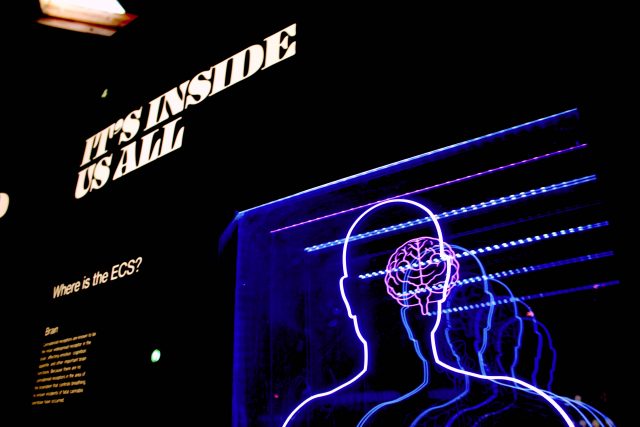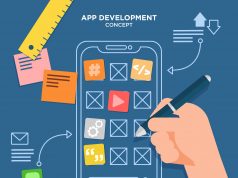In the ever-evolving landscape of digital experiences, the intricate interplay between user behavior and UX design psychology has taken center stage. As technology becomes more integrated into our lives, the design of digital interfaces has evolved beyond aesthetics to encompass a deeper understanding of human psychology. In the vibrant and competitive US market, the fusion of these disciplines has unlocked a new dimension of crafting user experiences that not only captivate but also influence behavior. This exploration delves into the fascinating realm of UX design psychology and its profound impact on user interactions within the United States.
Understanding the Human Psyche
Cognitive psychology:
Cognitive psychology is the study of how people think, learn, and remember. It can be helpful for UI/UX designers to understand how people process information and make decisions, to create interfaces that are easy to use and understand.Social psychology:
Social psychology is the study of how people interact with each other and with their environment. It can be helpful for UI/UX designers to understand how people are influenced by social factors, in order to create interfaces that are more persuasive.Behavioral psychology:
Behavioral psychology is the study of how people’s behavior is influenced by their environment. It can be helpful for UI/UX designers to understand how people respond to different stimuli, in order to create interfaces that are more effective in achieving their goals.
Mental models:
Mental models are the way that people understand and interact with the world around them. They can be helpful for UI/UX designers to understand how people think about and use products and services, in order to create interfaces that are more intuitive and easy to use.Cognitive load:
Cognitive load is the amount of mental effort that is required to perform a task. It can be helpful for UI/UX designers to understand how cognitive load affects people’s ability to use products and services, in order to create interfaces that are less taxing on the mind.Affordances:
Affordances are the perceived properties of an object that suggest how it can be used. They can be helpful for UI/UX designers to create interfaces that are more intuitive and easy to use, by making the affordances of different elements clear to the user.
The US Market: A Hotbed for UX Design Psychology
Amid the dynamic landscape of digital innovation, the US market stands as a fertile ground where the principles of UX design psychology flourish and thrive. Here, the convergence of user behavior and design psychology has found a unique resonance, shaping the way products and services are conceptualized, developed, and experienced. The following insights shed light on why the US market is not only embracing but also driving the application of UX design psychology:
Tech-Savvy Audience:
The US market boasts a tech-savvy population that is accustomed to interacting with a wide array of digital platforms. Users are increasingly discerning, seeking intuitive experiences that align seamlessly with their needs and preferences. This demand has paved the way for UX designers to leverage psychological insights to create experiences that resonate deeply with users.Competitive Landscape:
With countless brands vying for user’s attention, businesses operating within the US market recognize the critical role that user behavior plays in achieving a competitive edge. The strategic application of UX design psychology allows brands to stand out by crafting experiences that are not just functional but emotionally resonant.Diverse User Base:
The US is a melting pot of cultures, languages, and demographics. Designing experiences that cater to this diversity requires a nuanced understanding of user behavior. UX designers who grasp the psychological nuances of different user segments can create experiences that bridge cultural gaps and foster inclusivity.Evolving Consumer Expectations:
As technology advances, so do consumer expectations. Users in the US market are accustomed to seamless interactions across various platforms. Designers who apply UX design psychology principles can develop interfaces that not only meet but also exceed these evolving expectations, resulting in increased user satisfaction and loyalty.Data-Driven Insights:
The US market is characterized by its data-driven approach. The availability of user data allows designers to gain deeper insights into user preferences, behaviors, and pain points. By combining these insights with design psychology principles, designers can create experiences that address users’ specific needs and desires.Business Impact:
In the competitive business landscape of the US, the impact of UX design on bottom-line results is well recognized. Businesses understand that influencing user behavior through design psychology can lead to higher conversion rates, increased customer engagement, and enhanced brand loyalty.
In essence, the US market is a dynamic ecosystem where the symbiosis of UX design and psychology finds its true potential. As brands seek to resonate with users on a meaningful level, the strategic application of design psychology is not just a trend but a necessity. By marrying user behavior insights with cutting-edge design techniques, the US market is shaping the future of digital experiences, where interactions are not only seamless but also deeply impactful.
Visual Perception and Attention: Guiding User’s Focus

Visual perception and attention are two important concepts in UX design. This is the process of interpreting the information that our eyes receive, while attention is the ability to focus our awareness on a particular stimulus. By understanding how users perceive and attend to visual information, UX designers can create interfaces that are more effective in guiding users’ focus and influencing their behavior.
UI/UX designers can use visual perception and attention to guide users’ focus and influence their behavior. For example, they can use:
Color:
Color wields considerable power, attracting attention and establishing mood or atmosphere. For instance, red commonly signifies danger or excitement, while blue frequently conveys calmness or serenity.Contrast:
Contrast can be used to make certain elements stand out from the rest of the design. For example, a bright yellow button on a black background will be more likely to attract attention than a button in a similar shade of gray.Focal points:
Focal points draw the eye’s attention to a design. Designers craft them using color, contrast, size, or placement. For instance, a sizable, centrally positioned image often becomes a focal point, effectively capturing users’ visual interest.Hierarchy:
Hierarchy arranges design elements based on importance, guiding user focus and aiding their comprehension of presented information. For instance, positioning crucial details at the screen’s top or using larger, bolder fonts highlight key information, enhancing user understanding and engagement.
The Psychology of Decision-Making: Shaping Choices
UI/UX designers can use an understanding of the psychology of decision-making to create interfaces that are more effective in influencing user behavior. For example, they can:
Use defaults:
Defaults become the initial choices when users face decisions. Aligning defaults with user goals empowers UX designers to heighten the likelihood of users opting for the intended decision, effectively steering their choices towards desired outcomes.Use framing:
Framing actively shapes how information reaches users. It involves accentuating the strengths of one choice while underscoring the weaknesses of another. This strategic technique empowers UX designers, enabling them to wield significant influence over user decisions. By guiding users’ perceptions through adept framing, designers create interfaces that align with desired outcomes, ultimately delivering more effective and engaging user experiences.Use social proof:
Social proof is the tendency for people to follow the actions of others. By highlighting the choices that other users have made, UX designers can influence the user’s decision.
Consider user emotions:
Emotions play a big role in decision-making. UX designers can use colors, images, and language to evoke positive emotions that will lead to desired decisions.Test designs with users:
The best way to ensure that a design is effective is to test it with users. UX designers can conduct user interviews, usability testing, and A/B testing to get feedback on their designs.Iterate and improve:
The design process is iterative, meaning that it involves a cycle of design, testing, and refinement. This allows UX designers to get feedback from users and make improvements to the design over time.

Accessibility and Inclusivity: A Human-Centered Approach
Using high-contrast colors:
High-contrast colors make it easier for people with vision impairments to see the interface. For example, using a black background with white text makes it easier for people with low vision to read the text.Using large fonts:
Large fonts make it easier for people with vision impairments and people who are older to read the interface. For example, using a font size of 16pt or larger makes it easier for people with to read the text.Providing keyboard shortcuts:
Keyboard shortcuts make it easier for people who cannot use a mouse to navigate the interface. For example, providing a keyboard shortcut to close a window makes it easier for people who cannot use a mouse to close windows.Using audio descriptions:
Audio descriptions make it easier for people who are blind or visually impaired to understand the interface. For example, providing an audio description of an image makes it easier for people who are blind or visually impaired to understand what the image is depicting.Providing transcripts for videos:
Transcripts for videos simplify interface comprehension for those who are deaf or hard of hearing. A provided transcript clarifies spoken content within the video, enhancing accessibility and inclusivity for all users.Ensure translating all content into multiple languages:
Translating all content into multiple languages makes it easier for people who speak different languages to use the interface. For example, translating the text of a website into multiple languages makes it easier for people who speak different languages.Feedback:
Feedback is the information that is provided to users about their actions. By providing clear and concise feedback, UX designers can help users make informed decisions.
Conclusion
In the US market’s digital landscape, the marriage of UX design and psychology has unveiled a compelling synergy. This fusion empowers designers to not only understand user behavior but also influence it through strategic design choices. As user expectations evolve and competition intensifies, the strategic application of design psychology becomes a pivotal tool for crafting meaningful interactions. In this dynamic interplay between psychology and design, the US market becomes a crucible for innovation, and impactful. User-centric experiences that shape behavior and define the future of digital engagement.


















